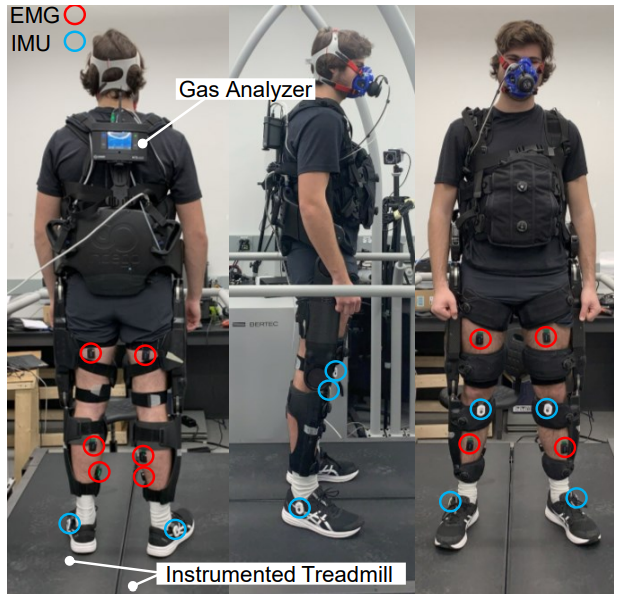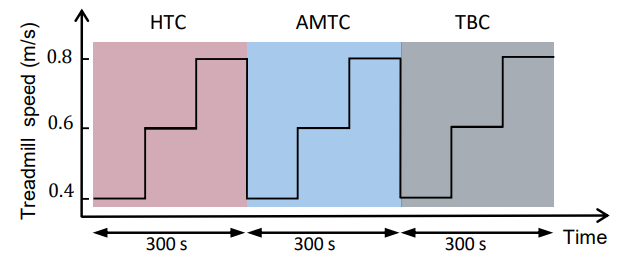This content originally appeared on HackerNoon and was authored by Exoself Technology Research
:::info Authors:
(1) Mohammad Shushtari, Department of Mechanical and Mechatronics Engineering, University of Waterloo (smshushtari@uwaterloo.ca);
(2) Julia Foellmer, Mechanics and Ocean Engineering Department, Hamburg University of Technology (julia.foellmer@tuhh.de);
(3) Sanjay Krishna Gouda, Department of Mechanical and Mechatronics Engineering, University of Waterloo and Toronto Rehabilitation Institute (KITE), University Health Network (arash.arami@uwaterloo.ca).
:::
Table of Links
2 Results
2.1 Initial Processed Data for a Representative Participant
2.2 Overall Performance Analysis
2.3 Interaction Portrait Analysis
2.4 Individual Adaptation Strategy
3 Discussion
5 Methods
5.1 Feedforward Control Strategies
Appendix A Complementary Example Data
Appendix B Comparison with Natural Walking
5.2 Experimental Setup
The experimental setup comprised a split-belt instrumented treadmill (Bertec, US), with force plates under each belt, providing ground reaction forces (GRF) under each belt, a lower limb exoskeleton (Indego, Parker Hannifin, US) with actuated hip and knee joints, fourteen wireless EMG sensors (Trigno, Delsys, USA), and a COSMED K5 wearable metabolic system (Albano Laziale, Roma, Italy) to measure oxygen uptake (VO2). Additionally, four Physilog IMUs (Physilog 6s, Gait Up SA, CH) and a COSMED K5 wearable metabolic system (Albano Laziale, Roma, Italy) are employed to measure gait spatiotemporal parameters and oxygen uptake (VO2), respectively. The exoskeleton, IMUs, load cells, and EMG sensors have sampling rates of 200 Hz, 128 Hz, 1000 Hz, and 2000 Hz, respectively. Following appropriate skin treatment, EMG sensors were placed on Gluteus Maximus, Biceps Femoris, Rectus Femoris, Vastus Medialis, Gastrocnemius Medialis, Soleus, and Tibialis Anterior muscles of each leg. Spatiotemporal gait parameters such as Minimum Toe Clearance (minTC), Maximum Heel Clearance (maxHC), Stance Time Percentage, and Stride Length are computed
\

\ using the Physilog sensors, as validated in previous studies [30, 31]. Before recording data for each subject, the COSMED K5 underwent a calibration process following a standardized procedure. Fig. 9 illustrates the exoskeleton and the placement of the sensors within the experimental setup.
\
5.3 Experimental Protocol
The experiment consisted of three blocks, each involving participants walking on the treadmill with the exoskeleton controlled by one of three different controllers: TBC, HTC, or AMTC. The order of the blocks was varied among participants to mitigate any potential order effects. Within each block, participants walked at three distinct speeds: ultra-slow (0.4 m/s), slow (0.6 m/s), and moderate (0.8 m/s). Each speed lasted for a duration of 100 seconds. For an illustration of the treadmill speed and the order of the controllers applied to the exoskeleton for participant #1, refer to Fig. 10.
\ A total of nine able-bodied participants (5 males and 4 females, age: 23.4±4.2 years, mass: 73.6±20.2 kg, height: 176.7±9.6 cm) participated in the study. All participants provided informed written consent prior to the experiments. The study protocol and procedures received ethical approval from the University of Waterloo Clinical Research Ethics Committee (ORE#41794). The study adhered to the principles outlined in the Declaration of Helsinki.
\
\

\ \ \
:::info This paper is available on arxiv under CC BY-NC-ND 4.0 DEED license.
:::
\
This content originally appeared on HackerNoon and was authored by Exoself Technology Research
Exoself Technology Research | Sciencx (2025-01-25T15:30:03+00:00) How to Test the Performance of an Exoskeleton. Retrieved from https://www.scien.cx/2025/01/25/how-to-test-the-performance-of-an-exoskeleton/
Please log in to upload a file.
There are no updates yet.
Click the Upload button above to add an update.
